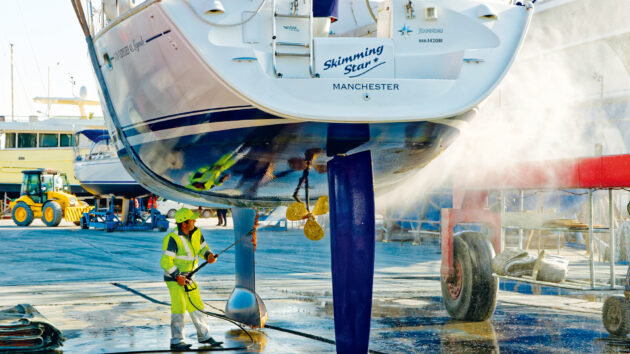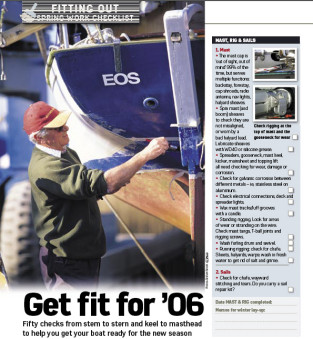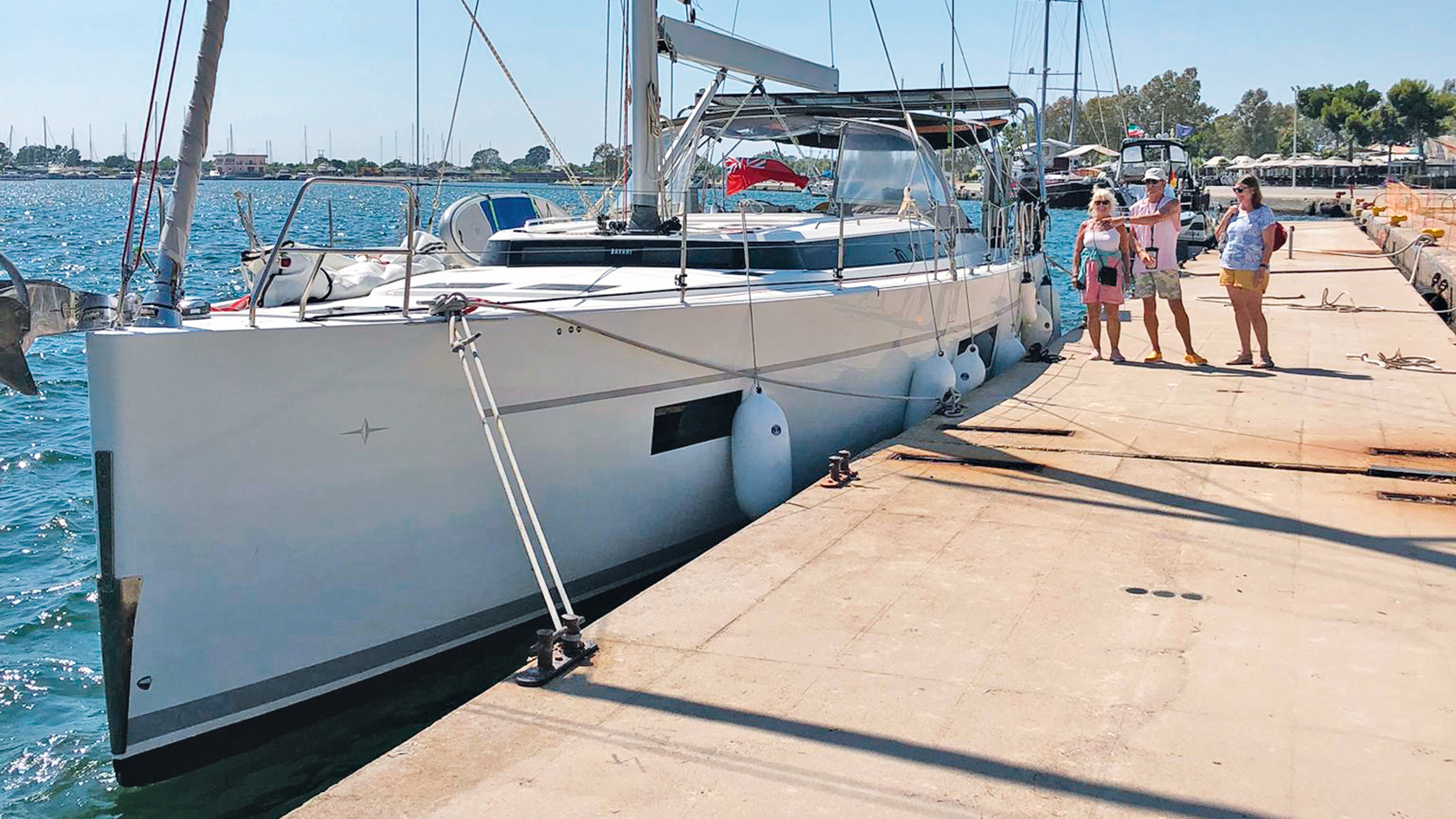Sponsored Content created with Ancasta
Whether you keep your yacht afloat or haul her out ashore, this quieter period of the year is ideal for essential maintenance, checks, and upgrades, says Mandy Boughton of Ancasta Yacht Services
As the last of the summer breeze fades and the nights start drawing in, many yacht owners instinctively turn their attention ashore.
The temptation to batten down the hatches, walk away and hibernate until spring is very real, but winter needn’t be something to endure – it could be a golden opportunity. In fact, winter is the best time to fully prepare your boat for the season ahead.
Boat winterisation isn’t just about the survival of your yacht through the colder months, it’s about preservation – and this includes maintaining the value of your yacht and therefore your investment. Sailing boats are exposed to wind, water, salt and UV for much of the year, and the effects of inactivity, moisture, and fluctuating temperatures during winter can take their toll.
Indeed, the best way to protect your yacht over winter is to haul her out, get her properly covered, and ensure systems are drained, cleaned, and checked. But even if she’s staying afloat, regular winter checks and preventative work are absolutely essential.
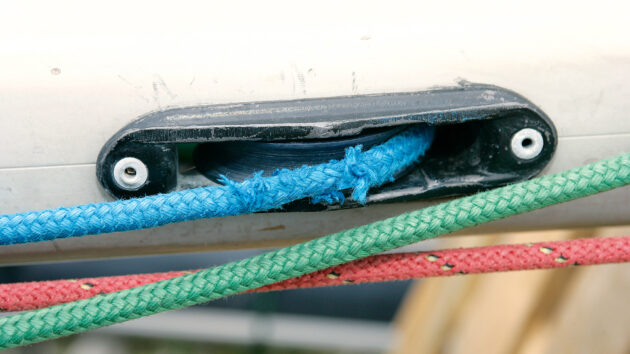
Check lines and halyards carefully for hidden chafing. Photo: Graham Snook
Thorough clean and dry out
A sailing yacht that’s clean and dry will always fare better in storage. Begin with a top-to-keel wash down: scrub decks, non-slip surfaces, cockpit lockers, and hull topsides. Remove any grime, salt, or fouling residue. Pay particular attention to stainless fittings, tracks, cleats and winches – corrosion here can creep in fast.
Canvas work like sprayhoods, sail covers and dodgers should be washed and dried before storing. If possible, take sails off the boat and store them dry in a warm, ventilated space. Damp sails stored in bags can develop mildew, and UV degradation is always a concern if they’re left exposed.
Below decks, remove all perishables, open lockers, and leave fridge and freezer doors ajar. Lift cushions, take home what you can, and consider having a heater or dehumidifier onboard, or moisture-absorbing crystals
if the yacht is sealed up for long periods.
Article continues below…
Fitting out checklist
Download your spring checklist
‘While we were out consuming the local delicacies, a stowaway was surreptitiously finding their way aboard’
Rat in Mi Kitchen, one of the greats by UB40, proved to have a whole new meaning when sailing in…
Rigging and deck gear
Your rigging and deck hardware are fundamental to performance and safety. Winter is the perfect time to carry out detailed inspections – on and off the mast.
Check standing rigging for signs of fatigue, broken wires, or corrosion, particularly around terminals and spreader ends. It’s a good rule of thumb to replace standing rigging every 10 years, so if you’re getting close to that deadline, book it in now to avoid last-minute delays when temperatures rise.
Wash all running rigging – halyards, sheets, and control lines in fresh water and dry thoroughly before storing. Take the chance to inspect for chafe or stiffened spots that could indicate hidden wear.
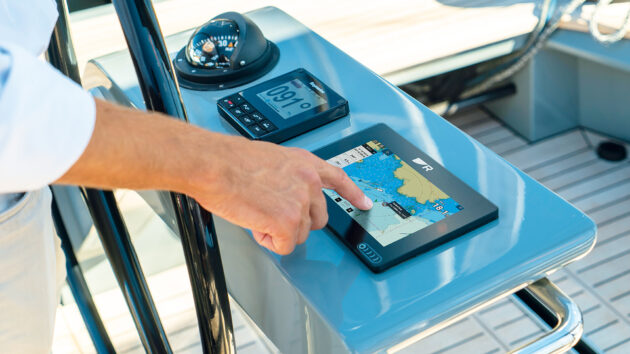
Take time to reassess and upgrade onboard electronics
Winches and deck fittings
Service winches, which includes stripping, cleaning and re-lubricating them. It’s a satisfying winter job and pays off in smoother sail handling. A top tip is to lay everything out in order when you dismantle and clean it – this makes it easier when rebuilding.
Do the same for blocks, traveller cars, and jammers. If anything’s become stiff or unreliable, it’s time to fix or replace it.
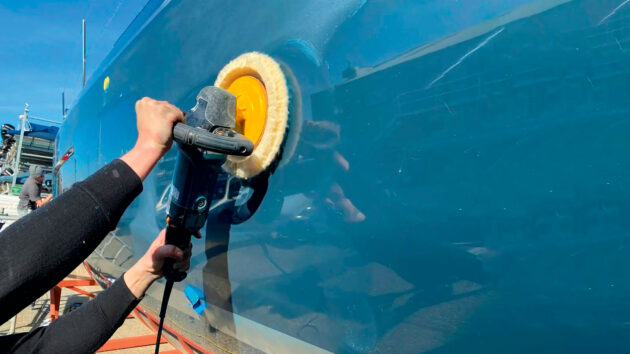
A thorough polish will revive and protect your topsides
Hull and antifouling
Hauling your boat out for winter allows access to the hull and running gear, areas often neglected mid-season. Things to do:
- Inspect the hull for blisters, stress cracks or areas of osmosis. Addressing these now is both easier and more economical than delaying.
- Antifoul application is an essential but often dreaded task. It protects your yacht from marine growth and ensures smooth sailing. Clean off the old layer, inspect, and recoat shortly before you go back in the water.
- Replace anodes if they’re below 50 per cent – a small job with big implications for corrosion protection.
- Polish topsides to protect against UV damage and revive faded gelcoat. The Ancasta team suggest a multi-stage process: cutting, buffing, and applying protective wax for a durable, glossy finish.
Engine service
Winter is the time for a full service.
Change the oil and filters, flush and replace coolant, inspect belts, and fog the cylinders if storing for long periods. Don’t forget the raw water impeller, fuel filters and gearbox oil – key components for reliable propulsion. If your engine has felt underpowered or unreliable, this could be the time to consider an upgrade or re-prop.
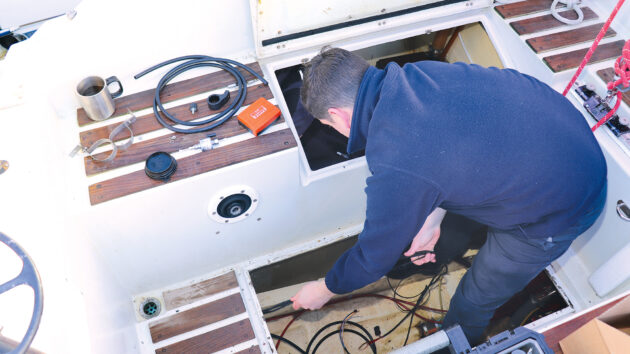
New or updated heating and hot water systems will help to extend your season
Fuel and battery maintenance
Fill your diesel tank to prevent condensation and treat it with a stabiliser. Run the engine to ensure the treated fuel is circulated through the system. Batteries should be disconnected, cleaned at the terminals, and topped up with distilled water if lead-acid. Store them in the cool and dry, and consider purchasing a trickle charger if they’re staying onboard.
Heating and hot water
Upgrading your onboard heating or hot water systems can dramatically extend your sailing season. Diesel heaters like Webasto or Eberspächer are popular choices, offering efficient warmth yet with low draw on battery banks.

Winter is the perfect time to pay attention to the topsides and gelcoat
Below deck upgrades
Winter is also the perfect time to refresh tired upholstery, improve galley appliances, or add those extra details that can really elevate your onboard experience, such as an upgraded chartplotter, new instruments or battery monitoring systems or even a tap for filtered or boiling water if you have 240V.
Smooth start to the new season
Time and tide wait for no one, and neither do yard schedules. Winter servicing slots fill up extremely quickly, especially for specialised jobs, such as rigging work, electrical upgrades, and full-scale refits.
Don’t leave it until the spring either – get your projects booked in sooner rather than later so they can be completed over the autumn and winter months.
And remember, even during lay-up, regular winter check-ins are essential. A quick walk through the boat can help you identify any leaks, pests or other issues before they escalate.
So, why not make the most of the ‘off’ season to iron out those annoying little issues that you’ve been ignoring, or making those modifications onboard that you’ve been promising your family and crew.
Whether you’re a weekend cruiser or blue-water sailor, winter really is the smart time to invest in your yacht – and make sure she’s ready to go when you are.
Enjoyed reading this?
A subscription to Yachting Monthly magazine costs around 40% less than the cover price, so you can save money compared to buying single issues.
Print and digital editions are available through Magazines Direct – where you can also find the latest deals.
YM is packed with information to help you get the most from your time on the water.
-
-
- Take your seamanship to the next level with tips, advice and skills from our experts
- Impartial in-depth reviews of the latest yachts and equipment
- Cruising guides to help you reach those dream destinations
-
Follow us on Facebook, Twitter and Instagram.
Note: We may earn a commission when you buy through links on our site, at no extra cost to you. This doesn’t affect our editorial independence.




